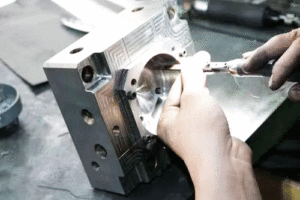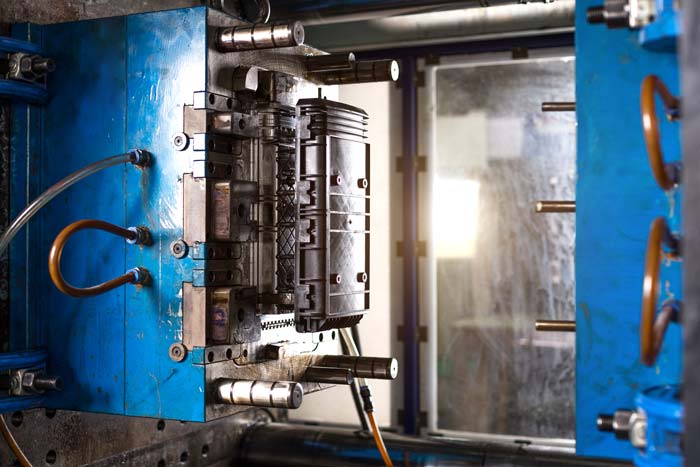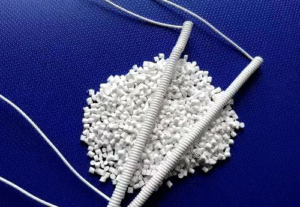
Polishing Treatment for Plastic Molds
Polishing Treatment for Plastic Molds With the widespread application of plastic products, such as daily-use items and beverage packaging containers, there is often a requirement
In the injection molding industry, the issue of rising oil temperature is a source of concern. An increase in oil temperature not only affects the machine’s performance but also significantly impacts the machine’s lifespan. So, how can we prevent the rise in oil temperature in injection molding? We need to analyze various aspects, including viscosity index, the presence of an efficient hydraulic cooling system, viscosity, and other comprehensive performance factors.
This parameter directly reflects the property of oil viscosity changing with temperature (i.e., the viscosity-temperature characteristics of the oil). A higher viscosity index indicates that the viscosity of the oil changes less with temperature, while a lower one indicates greater change.
Well-known manufacturers like Mobil and Shell have a viscosity index (VI) of ≥110 for their anti-wear hydraulic oils, whereas Chinese produced high-grade anti-wear hydraulic oils have a viscosity index of around VI=95. Foreign-produced high viscosity index hydraulic oils (HV) and multi-grade engine oils have a viscosity index of VI>140, which Chinese domestic products do not meet.
This is particularly important for users of Chinese produced hydraulic oils in injection molding machines.
A decrease in viscosity index will narrow the temperature range in which the oil can be used. If necessary, users of the oil should consult relevant information from the oil manufacturer and make appropriate adjustments to the oil’s usage range. In some cases, it may also be necessary to modify equipment-related settings (such as maximum temperature) accordingly.
When it comes to improving the hydraulic oil cooling system of injection molding machines (more precisely, the hydraulic oil temperature control system), although different manufacturers employ specific methods, the fundamental approach is the same. It involves checking whether there is any debris clogging the hydraulic oil cooler, which can lead to decreased cooling efficiency. If necessary, clean the cooler.

(ISO VG, viscosity measured in mm²/s) The principle for determining hydraulic oil viscosity is to maintain it within the optimal range (16-36 x 10^-6 mm²/s) for components such as pumps and motors, taking into consideration the working temperature and efficiency of the hydraulic circuit. The viscosity at short-term cold startups corresponding to the lowest environmental temperature should be ≤1000 x 10^-6 mm²/s. Additionally, the viscosity should be ≥10 x 10^-6 mm²/s at the temperature corresponding to the highest permissible leakage oil temperature (90°C) for short-term operation.
Due to the high operating pressure (≥14MPa) of modern injection molding machine hydraulic systems and the relatively high maximum working oil temperature (around 50°C), it is essential to ensure that the hydraulic system can function properly within the regular oil change intervals. This requires that the selected oil for the system exhibits excellent qualities in terms of lubrication, oxidation stability, anti-wear properties, rust and corrosion resistance, demulsibility, foam resistance, shear stability, as well as extreme pressure load-bearing capacity, among others.
Particularly when opting for substitute oils, it is crucial to ensure that they meet the requirements specified for the oil they are replacing. Otherwise, the use of non-compliant oil quality during equipment operation can lead to severe issues such as system overheating and component damage.

Polishing Treatment for Plastic Molds With the widespread application of plastic products, such as daily-use items and beverage packaging containers, there is often a requirement

Injection Molding Techniques for TPE and TPR Injection Molding Techniques for TPE and TPR 1. Dry the TPE and TPR material before injection molding It

Winter Maintenance Measures for Injection Molding Machines As winter approaches and temperatures gradually drop, a cold chill envelops the earth. While ensuring personal warmth, it

Assessment Regulations for Mold Trial Exceeding 3 Times Assessment Regulations for Mold Trial 1. Purpose The purpose of this regulation is to standardize the work of